À l’occasion de la Journée internationale de la biodiversité, le Centre pour la biodiversité des villes de l’ICLEI, le projet de soutien de l’UE au Cadre pour la biodiversité post 2020 et The Nature Of Cities (TNOC) mettent en lumière la nécessité de faire de la nature une partie de la solution pour des villes plus vertes.
Le monde s’urbanise rapidement, exposant nos ressources naturelles à une pression croissante pour répondre aux demandes en infrastructures, terres, eau, nourriture et autres besoins vitaux. Selon le département des affaires économiques et sociales des Nations unies (UN DESA), 55 % de la population mondiale vivait dans des zones urbaines en 2018 et cette proportion devrait atteindre 68 % en 2050. Le Rapport Planète Vivante 2020 du WWF indique que l’urbanisation est une des principales causes de destruction et dégradation de la nature et que le monde surexploite actuellement les ressources naturelles à un rythme sans précédent. L’indice Planète vivante 2020 indiqueune chute moyenne de 68 % des populations surveillées de mammifères, d’oiseaux, d’amphibiens, de reptiles et de poissons entre 1970 et 2016. Ces tendances démographiques des espèces constituent un indicateur important de mesure de la santé globale des écosystèmes.
Read this essay in English.
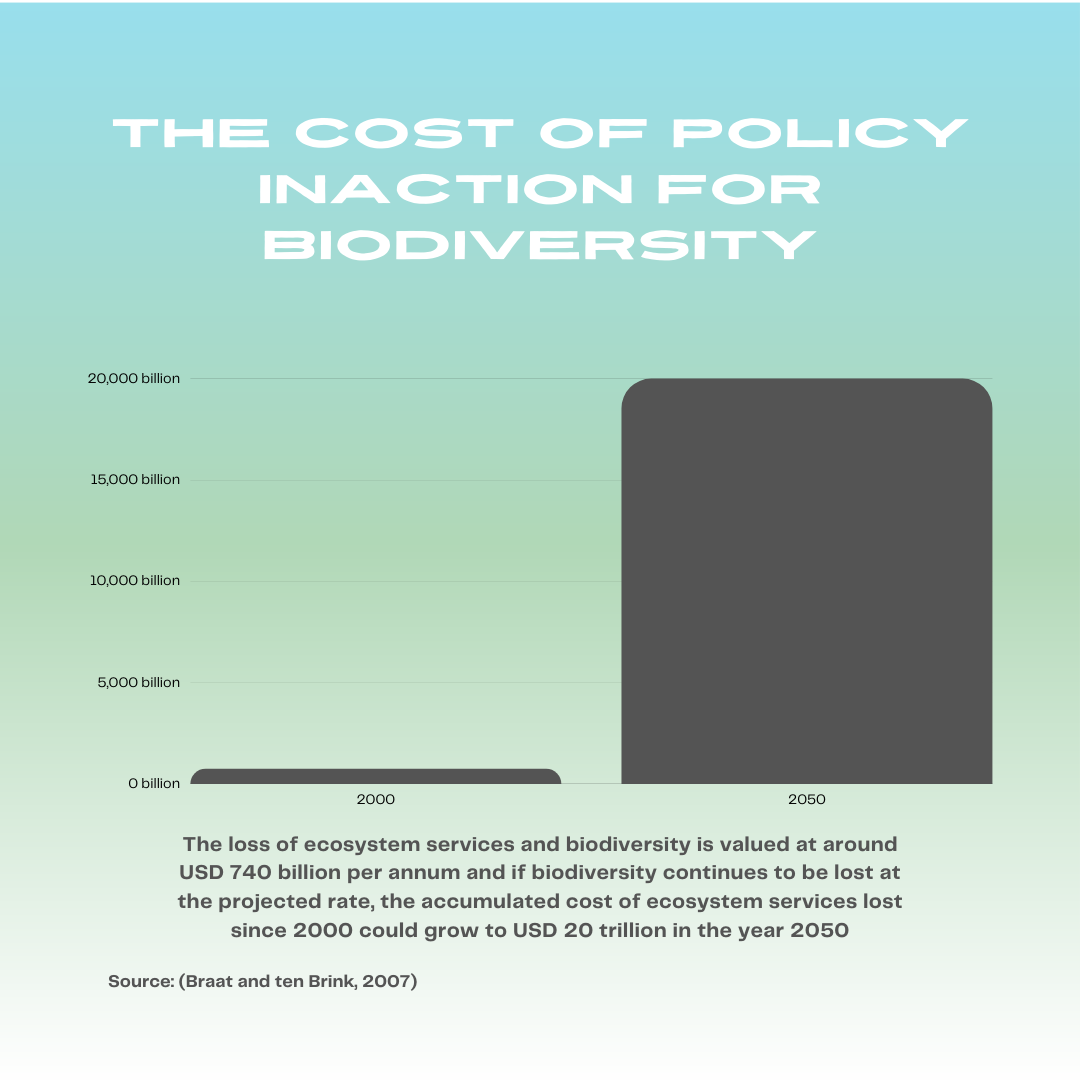
Cet essai fait partie du projet francophone du TNOC.
L’initiative de financement de la biodiversité (PNUD BIOFIN) estime que plus de 400 milliards de dollars US sont nécessaires chaque année pour protéger la biodiversité. Mais seule une fraction de cette somme est actuellement levée. Au niveau des gouvernements locaux, en particulier, les ressources financières sont principalement obtenues par des transferts de fonds intergouvernementaux, des subventions et des taxes. Or nombre d’entre eux ne sont pas viables à long terme. Le financement de la biodiversité a été encore davantage mis à l’épreuve par la pandémie mondiale COVID-19 en cours (OCDE, 2020). Le rapport sur les risques 2021 du Forum économique mondial (WEF) classe la perte de biodiversité, les maladies infectieuses et l’échec de l’action climatique parmi les quatre principaux risques en termes d’impact dans le paysage mouvant des risques. La pandémie en cours a des répercussions humaines, sociales et économiques indéniables et a démontré la vulnérabilité et les inégalités inhérentes à nos systèmes socio-économiques. Une enquête menée conjointement par l’OCDE et le Comité européen des régions (CdR) dans 24 pays de l’Union européenne indique que la plupart des administrations municipales s’attendent à ce que la crise socio-économique liée au COVID-19 ait un impact négatif sur leurs finances, avec un dangereux “effet ciseaux” de hausse des dépenses et de baisse des recettes. Cet “effet ciseaux” est vécu de manière encore plus aiguë dans les pays en développement.
Le WEF admet que “si le COVID-19 et la nature sont liés, la reprise devrait l’être aussi”. Selon le rapport “Future of Nature and Business” du Forum économique mondial, des développements favorables à la nature dans le domaine des infrastructures et dubâti pourrait créer plus de 3 000 milliards de dollars d’opportunités commerciales et 117 millions d’emplois d’ici 2030. La cinquième édition du Global Biodiversity Outlook (GBO) a identifié les villes et les infrastructures durables comme l’une des huit voies de transition permettant de vivre en harmonie avec la nature et de réaliser la Vision pour la Biodiversité à l’horizon 2050 définie par la Convention pour la Diversité Biologique des Nations-Unies.
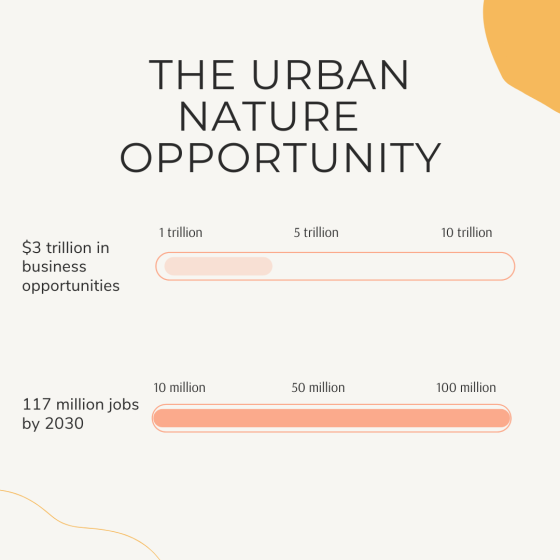
Plus récemment, le Dasgupta Review of the Economics of Biodiversity, publié en février de cette année, a souligné que nos économies, nos moyens de subsistance et notre bien-être dépendent tous de notre bien le plus précieux : la nature. “La nature est plus qu’un bien économique : elle a aussi une valeur intrinsèque. La biodiversité permet à la nature d’être productive, résiliente et adaptable.” affirme la publication. Selon cette revue, les estimations de notre impact global sur la Nature suggèrent que nous aurions besoin de 1,6 Terre pour maintenir le niveau de vie actuel du monde. Il estime ensuiteque “pour protéger 30% des terres et des océans de la planète et gérer efficacement ces zones d’ici 2030, il faudrait un investissement moyen de 140 milliards de dollars par an.”
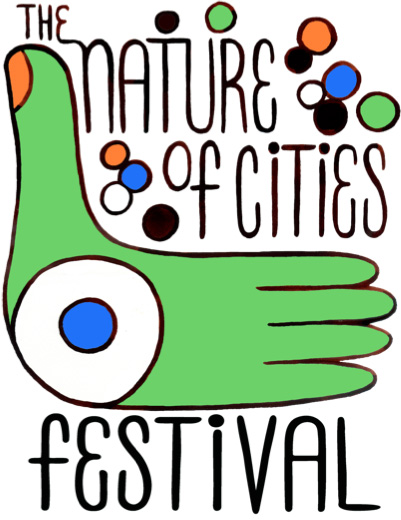 Amener la conversation au Festival TNOC
Amener la conversation au Festival TNOC
Alors que nous nous engageons sur la voie de la relance et de la re-conception des villes, il est crucial de le faire en reconnaissant les limites planétaires, en envisageant la nature comme partie intégrante de la solution et en abordant les questions d’inégalité et d’injustice. Il est donc de plus en plus nécessaire de mobiliser des ressources, tant pour répondre aux demandes urbaines, sociales et économiques, que pour garantir une gestion durable des écosystèmes et des ressources naturelles dont dépendent bon nombre de ces demandes. Il est communément admis que la mobilisation des ressources fait partie intégrante de la réalisation de nombreux objectifs mondiaux actuels, tels que le Cadre mondial pour la biodiversité post-2020, les objectifs de développement durable (ODD) et bien d’autres.
Le Global City Biodiversity Center (CBC) d’ICLEI a plaidé pour une mobilisation accrue des ressources et des investissements dans les infrastructures vertes et bleues, ainsi que pour la restauration des services écosystémiques, à l’échelle de la ville et de la région, dans le cadre de sa feuille de route pour la défense de la biodiversité en vue de la 15e Conférence des parties à la Convention sur la diversité biologique. L’initiative Cities with Nature s’inscrit dans le cadre d’une collaboration entre ICLEI (au nom de la Global Taskforce of Local and Regional Governments), le Comité européen des régions, Regions for Sustainable Development, le Comité consultatif des gouvernements infranationaux (coordonné par Regions4 Sustainable Development et le gouvernement du Québec), le Group of Leading Subnational Governments toward Aichi Biodiversity Targets et le gouvernement écossais.
Pour élargir le débat sur l’investissement dans un réaménagement des villes intégrant mieuxla nature et sanspréjudice net pour la biodiversité, ICLEI a organisé et accueilli une session virtuelle au TNOC Festival 2021. Le thème de cette session, “Financer des villes plus vertes pour l’avenir que nous voulons”, était particulièrement pertinent au regard des conclusions de l’étude Dasgupta sur l’économie de la biodiversité publiée en février 2021. Il est de plus en plus urgent d’engager les investisseurs et les administrateurs des villes sur le sujet de l’investissement, car les administrations municipales sont confrontées à des pressions croissantes pour faire face à la triple crise de la biodiversité, du climat et de la santé, alors que leurs sources de revenus diminuent de manière alarmante en raison des effets d’entraînement de la pandémie en cours sur l’économie et le tissu social à l’échelle urbaine et nationale.
La session “Financer des villes plus vertes pour l’avenir que nous voulons” a pris la forme d’une table ronde, qui a réuni des experts financiers, des investisseurs et des représentants des villes pour échanger des idées sur les approches, produits et solutions de financement innovants auxquels les villes pourraient avoir accès pour accélérer l’investissement et la transition vers des infrastructures vertes et bleues, une relance verte et des processus d’achat verts, afin de restaurer les écosystèmes et leur contribution aux personnes et de protéger la biodiversité. La session a donné l’occasion à certaines villes du Sud, Campinas au Brésil et Kochi en Inde, de présenter un concept de projet de leur ville respective au panel d’experts et d’explorer les possibilités de financement de la biodiversité, l’assistance technique et les solutions innovantes.
La session a été modérée par Mme Kimberley Pope, chef de projet et de communauté, Nature Action Agenda, au Forum économique mondial, et le panel d’experts était composé de Frédéric Audras, chef du département Développement urbain, planification et logement à l’Agence française de développement (AFD) ; Alexander Wiese, directeur général, co-responsable de l’Europe chez Bankers without Boundaries (BWB) ; et Aloke Barnwal, spécialiste principal du changement climatique, unité des programmes et coordinateur du Sustainable Cities Impact Program (SCIP) du Fonds pour l’environnement mondial (FEM). Les présentations des villes ont été faites par Gabriel Dias Mangolini Neves, ingénieur en environnement au Secrétariat de l’environnement et du développement durable de la ville de Campinas, et par le Dr C. Rajan, directeur du Centre pour le patrimoine, l’environnement et le développement (C-HED) de la municipalité de Kochi.
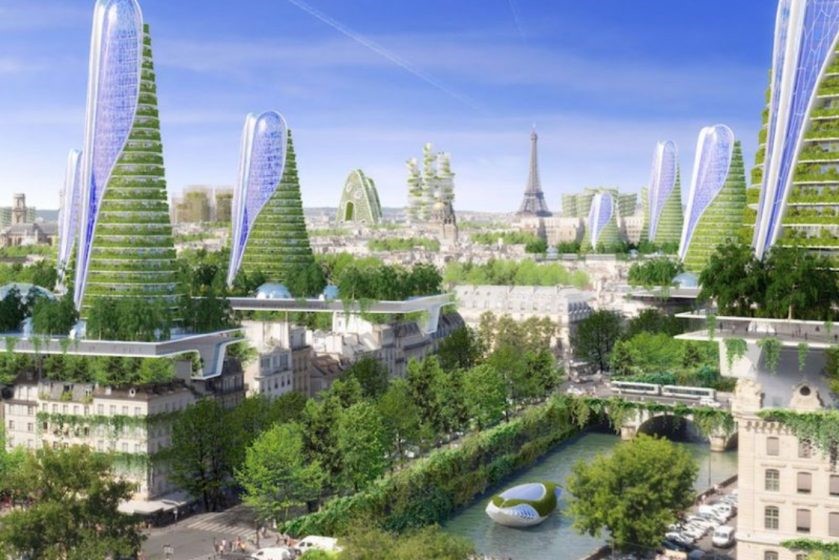
Le panel a abordé les questions suivantes : les facteurs clésque les institutions de financement et les investisseurs recherchent lorsqu’ils examinent des projets. Les experts ont partagé leurs idées et conseils sur les changements qui pourraient être nécessaires pour rendre l’offre des deux villes plus attrayantes du point de vue des investissements et du financement. Les experts ont également échangé des informations sur les mécanismes et les options de financement et d’investissement disponibles qui seraient les mieux adaptés aux projets des deux villes. Une discussion a aussi eu lieu sur les facteurs clés de succès et les mécanismes de gestion des risques qui doivent être en place pour que les investisseurs envisagent d’investir dans les projets. Enfin, les panélistes et les experts des villes ont discuté des moyens dont les villes ont besoin pour accéder au financement et concevoir des solutions innovantes en matière de durabilité. Ils ont également identifié certains des mécanismes et options disponibles pour aider les villes à renforcer leurs capacités.
En conclusion, construire des villes plus vertes pour un avenir plus durable est possible, mais nécessite une action et une réorientation des investissements des secteurs public et privé. Les villes, en particulier, bénéficieront d’un environnement d’investissement favorable qui facilite l’accès aux mécanismes de financement et d’investissement et fournit des solutions de financement efficaces à tous les niveaux. La mobilisation des ressources est une question politique clé dans les consultations et les négociations en cours sur le cadre mondial pour la biodiversité (GBF) post-2020. Elle faitpartie intégrante de la garantie de sa mise en œuvre efficace. Un groupe d’experts a été nommé en vertu de la décision 14/22 de la 14e Conférence des Parties (COP) à la Convention sur la diversité biologique (CDB), afin d’explorer, d’examiner et de faire des recommandations sur divers aspects de la mobilisation des ressources à inclure dans le GBF post-2020.
Les rapports et recommandations du panel d’experts seront délibérés lors des sessions informelles et formelles de l’Organe Subsidiaire pour laMise en œuvre (SBI). Les ambitions des villes et des régions concernant la mobilisation des ressources sont reflétées dans la Déclaration d’Édimbourg sur le GBF post-2020. Si nous pouvons mobiliser les ressources financières nécessaires pour soutenir la transition vers un avenir plus vert qui favorise le développement de la nature dans les villes, nous créerons non seulement de nouvelles opportunités pour les entreprises et des emplois pour tous, mais nous renforcerons également le lien des villes avec la nature pour une planète plus durable, et pour l’avenir que nous voulons.
Ingrid Coetzee et Elizabeth Chouraki
Cape Town et Paris

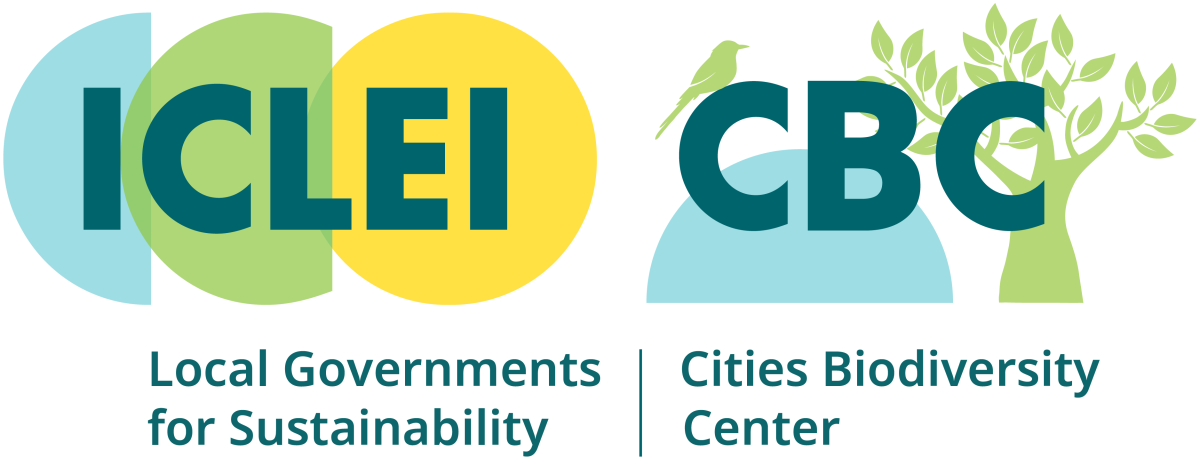
[1] “Mobilizing Investors to Protect Climate, Land and Biodiversity – Summary of Three Key Events on Natural Capital Investing November 2019, and outlook 2020”
[2] OECD, 2020, The territorial impact of COVID-19: Managing the crisis across levels of government
* * *
Financing Greener Cities for the Future We Want
For the International Biodiversity Day, ICLEI Cities Biodiversity Center, the Post 2020 Biodiversity Framework – EU support project and The Nature Of Cities shine a light on the need to make nature part of the solution with greener cities.
The world is rapidly urbanizing, putting our natural resources under increasing pressure to meet demands for infrastructure, land, water, food, and other crucial needs. According to the United Nations Department of Economic and Social Affairs (UN DESA) 55% of the world’s population lived in urban areas in 2018, and it predicted that this proportion would increase to 68% by 2050. The WWF 2020 Living Planet Report recorded that the urbanisation is one of the underlying trends driving the destruction and degradation of nature; and pointed out that the world is currently overusing natural resources at an unprecedented rate. The 2020 global Living Planet Index shows “an average 68% fall in monitored populations of mammals, birds, amphibians, reptiles and fish between 1970 and 2016. Species’ population trends are important because they are a measure of overall ecosystem health”.
Infrastructure is central to achieving the Sustainable Development Goals (SDGs), and globally we build the equivalent of “one Paris per week” (Anderson, 2020) in new structures to meet our demand for infrastructure. The natural resource implications of meeting this need for infrastructure is vast. We need to integrate nature into the design of infrastructure to minimize the negative impact of this infrastructure and make it nature positive. Meeting these increasing demands, while protecting biodiversity, places significant strain on financial resources at both national and local government levels.
Lis cet essai en français.
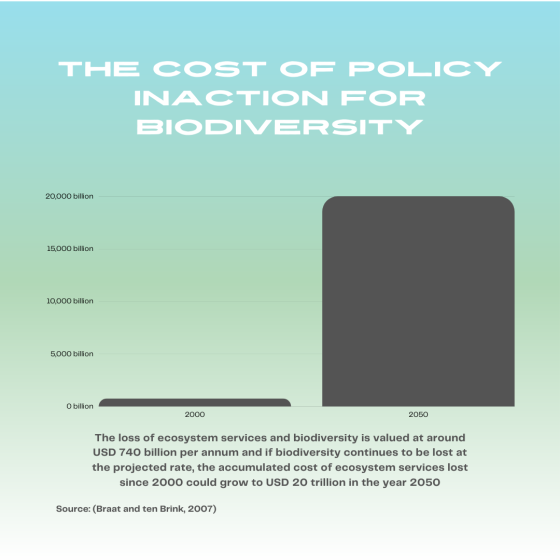
This essay is part of the TNOC Francophone project.
The Biodiversity Finance Initiative (UNDP BIOFIN) estimates that over US$400 billion is needed annually to protect biodiversity.[1] However, only a fraction of this is currently being mobilized. At the local government level, in particular, financial resources are predominantly obtained through intergovernmental transfer payments, grants, subsidies and taxes. Many of which are unsustainable over the long term. Funding for biodiversity has been further stressed under the current global COVID-19 pandemic (OECD, 2020). The World Economic Forum (WEF) 2021 Risk Report ranks biodiversity loss, infectious disease, and climate action failure among the top 4 risks by impact in the evolving risk landscape. The unfolding pandemic is having undeniable human, social and economic impacts, and has demonstrated the inherent vulnerability and inequalities of our socio-economic systems. A survey jointly conducted by the OECD and the European Committee of the Regions (CoR) in 24 European Union countries, indicates that most city governments expect the socio-economic crisis linked to COVID-19 to have a negative impact on their finances, with a dangerous “scissors effect” of rising expenditure and falling revenues.[2] This “scissors effect” is felt even more acutely in developing nations.
The WEF recognizes that, “COVID-19 and nature are linked, so should be the recovery”. According to the World Economic Forum’s Future of Nature and Business Report, a nature-positive pathway in the infrastructure and built environment could create over $3 trillion in business opportunities and create 117 million jobs by 2030. And the 5th Global Biodiversity Outlook (GBO) identified sustainable cities and infrastructure as one of 8 transition pathways to living in harmony with nature and to achieving the 2050 Biodiversity Vision.

More recently, the Dasgupta Review of the Economics of Biodiversity, released in February this year, emphasized that our economies, livelihoods and well-being all depend on our most precious asset: Nature. “Nature is more than an economic good: it has intrinsic worth too. Biodiversity enables Nature to be productive, resilient and adaptable.” According to this Review, estimates of our total impact on Nature suggest that we would require 1.6 Earths to maintain the world’s current living standards. And further that it estimated that “to protect 30% of the world’s land and ocean and manage these areas effectively by 2030 would require an average investment of $140 billion annually.”
 Taking the conversation to TNOC Festival 2021
Taking the conversation to TNOC Festival 2021
As we contemplate the path to recovery and redesign of cities, it is crucial that we consider this from a lens that recognizes planetary boundaries, where nature is part of the solution, and issues of inequality and injustice are addressed. There is thus an increasing need for resource mobilization, not only to meet many urban, social and economic demands, but importantly to ensure that the ecosystems and natural resources on which many of these demands depend, are managed sustainably. It is widely recognized that resource mobilization plays an integral part in achieving many of the current global objectives, such as the Post-2020 Global Biodiversity Framework, Sustainable Development Goals and many others.
ICLEI’s Global City Biodiversity Center (CBC) has advocated for increased resource mobilisation and investment in green and blue infrastructure, and the restoration of ecosystem services, at the city and regional scale as part of its ongoing biodiversity advocacy roadmap towards the 15th Conference of Parties of the Convention on Biological Diversity. The Cities with Nature initiative forms part of a collaborative action between ICLEI (on behalf of the Global Taskforce of Local and Regional Governments), the European Committee of the Regions, Regions for Sustainable Development, Advisory Committee for Subnational Governments (coordinated by Regions4 Sustainable Development and the Government of Quebec), the Group of Leading Subnational Governments toward Aichi Biodiversity Targets, and the Scottish Government.
To take the conversation about investment for redesigning cities where nature is part of the solution and results in no net harm to biodiversity, to a wider audience, ICLEI organized and hosted a virtual seed session at TNOC Festival 2021. The topic of this session, “Financing greener cities for the future we want”, was particularly relevant given the findings of the Dasgupta Review on The Economics of Biodiversity released in February 2021. The need for engaging investors and city administrators on the topic of investment is increasingly urgent, as city governments are facing mounting pressures to address the triple biodiversity, climate and health crises, while their revenue sources are decreasing alarmingly due to the knock-on effects of the ongoing pandemic on the economy and social fabric at both urban and national scales.
The “Financing greener cities for the future we want” session took the form of a round table discussion, which finance experts, investors and city representatives together to engage and share insights on innovative finance approaches, products and solutions that cities could access to accelerate investment and transition in green and blue infrastructure, a green recovery, and green procurement, in order to restore ecosystems and their contribution to people and protect biodiversity. It provided the opportunity for selected Global South cities, Campinas in Brazil, Kochi in India, to pitch a project concept from their respective cities, to the panel of experts and explore potential biodiversity finance avenues, technical assistance and innovative solutions.
The session was moderated by Ms Kimberley Pope, Project and Community Lead, Nature Action Agenda, at the World Economic Forum and the panel of experts were Frédéric Audras, Head of the Urban Development, Planning and Housing Department at the Agence Française de Dévelopement (AFD); Alexander Wiese, Managing Director, Co-Head Europe at Bankers without Boundaries (BWB); and Aloke Barnwal, Senior Climate Change Specialist, Programs Unit and Coordinator of the Global Environmental Facility (GEF) Sustainable Cities Impact Program (SCIP). The city pitches were presented by Gabriel Dias Mangolini Neves, Environmental Engineer at in the Green, Environment and Sustainable Development Secretariat of the City of Campinas; and Dr C Rajan, Director: Centre for Heritage, Environment and Development (C-HED), at Kochi Municipal Corporation.

The panel touched on the following issues: the most important factors that financing institutions and investors look for when considering projects and the experts shared their insights and advice on what changes could be needed to make the two cities’ pitch more attractive from an investment/financing perspective. The panelists also shared information on financing and investment mechanisms and options that are available and would be best suited to the two city pitches. There was also discussion on the key success factors and risk management mechanisms that need to be in place for investors to consider investing in projects. Finally, the panelists and city experts discussed the capacities that cities need to access finance and design innovative sustainability solutions; and identified some of the available mechanisms and options that support cities in building these capacities.
To conclude, building greener cities for a more sustainable future is possible, but requires action and redirecting investment by both the public and private sectors. Cities, in particular, will benefit from an enabling investment environment that facilitates access to financing and investment mechanisms and provides effective financing solutions at all levels. Resource mobilization is a key policy issue in the consultations and negotiations on the post-2020 global biodiversity framework (GBF), and is viewed as integral to ensuring its effective implementation. A panel of experts was appointed under Decision 14/22 of the 14th Conference of Parties (COP) to the Convention on Biological Diversity (CBD), to explore, consider and make recommendations on various aspects of resource mobilization for inclusion in the post-2020 GBF. The reports and recommendation of the panel of experts will be deliberated during the informal and formal sessions of the Subsidiary Body on Implementation (SBI). Cities and regions’ ambitions concerning resource mobilisation are reflected in the Edinburgh Declaration on the post-2020 GBF. If we can mobilize the financial resources needed to support the transition to a greener future that promotes nature positive development in cities, we will not only create new opportunities for business and new jobs for all, but also strengthen cities’ connection to nature for a more sustainable planet, and for the future we want.
Ingrid Coetzee and Elizabeth Chouraki
Cape Town and Paris

about the writer
Elisabeth Chouraki
Elisabeth Chouraki coordinates the Post-2020 Biodiversity Framework – EU support project implemented by Expertise France and funded by the European Union.


[1] “Mobilizing Investors to Protect Climate, Land and Biodiversity – Summary of Three Key Events on Natural Capital Investing November 2019, and outlook 2020”
[2] OECD, 2020, The territorial impact of COVID-19: Managing the crisis across levels of government


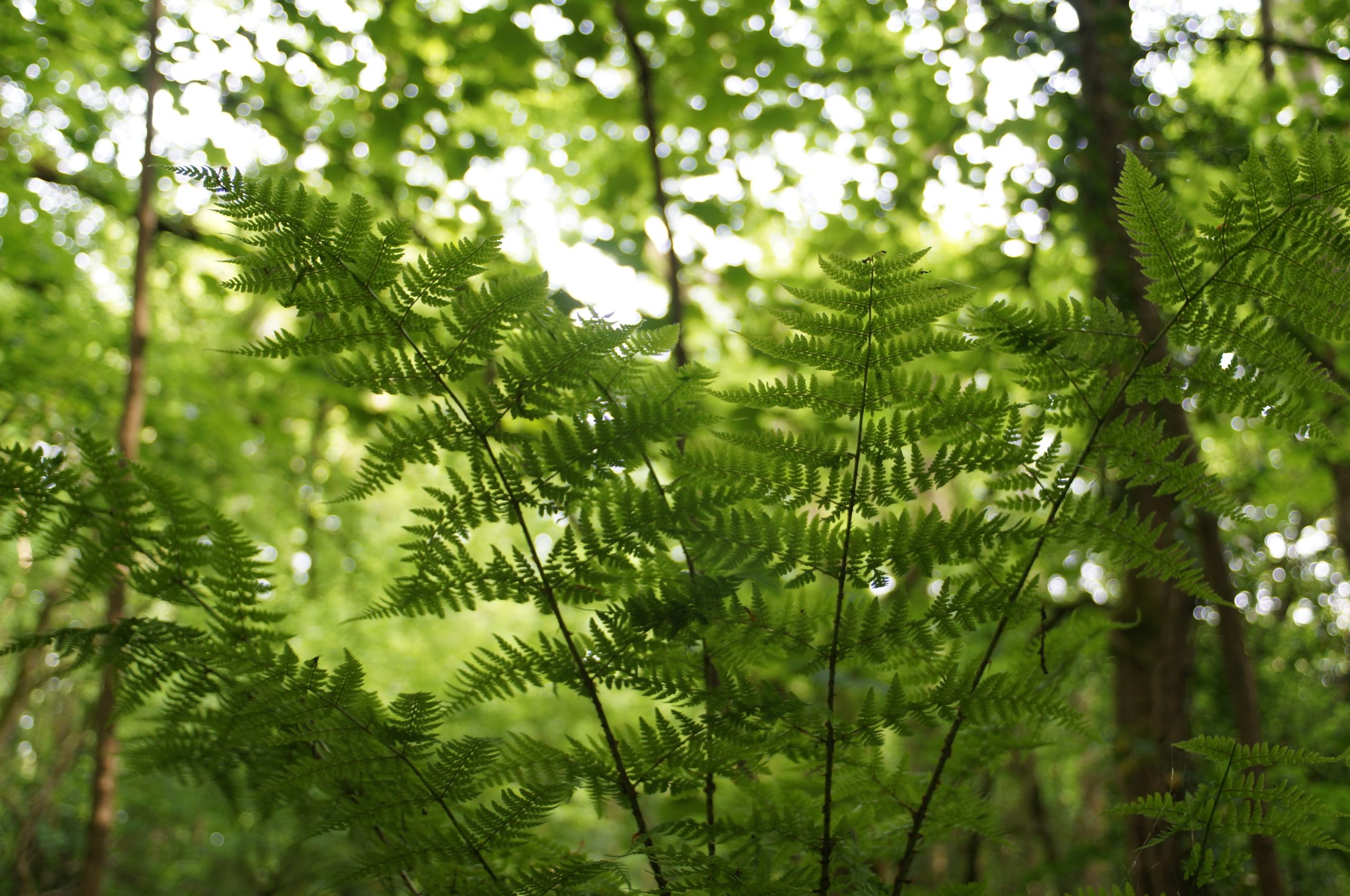


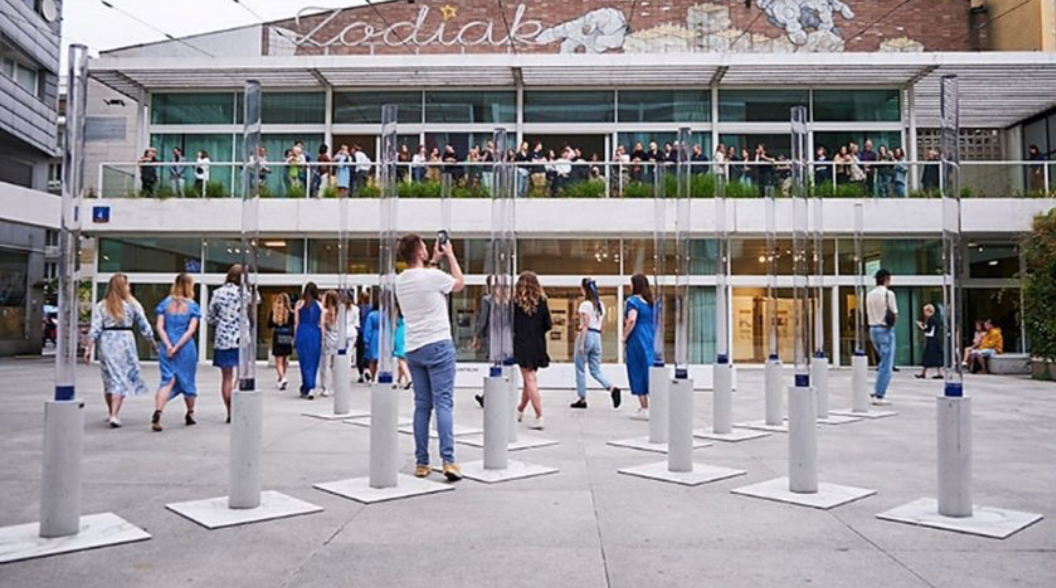
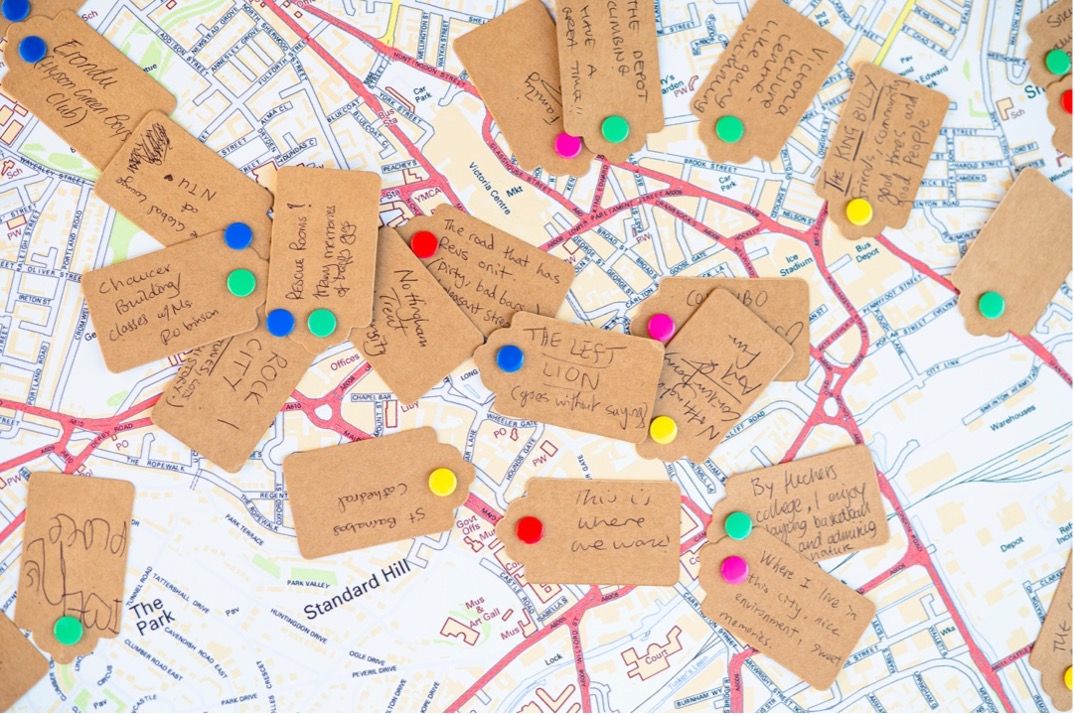



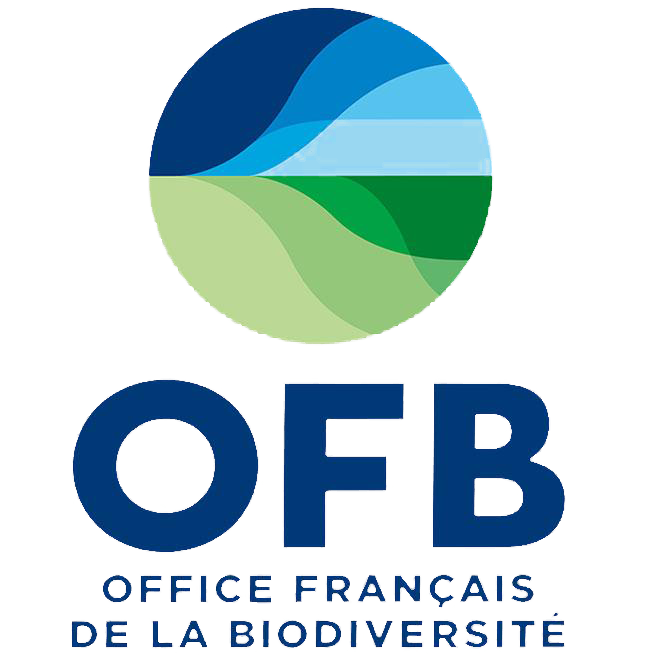



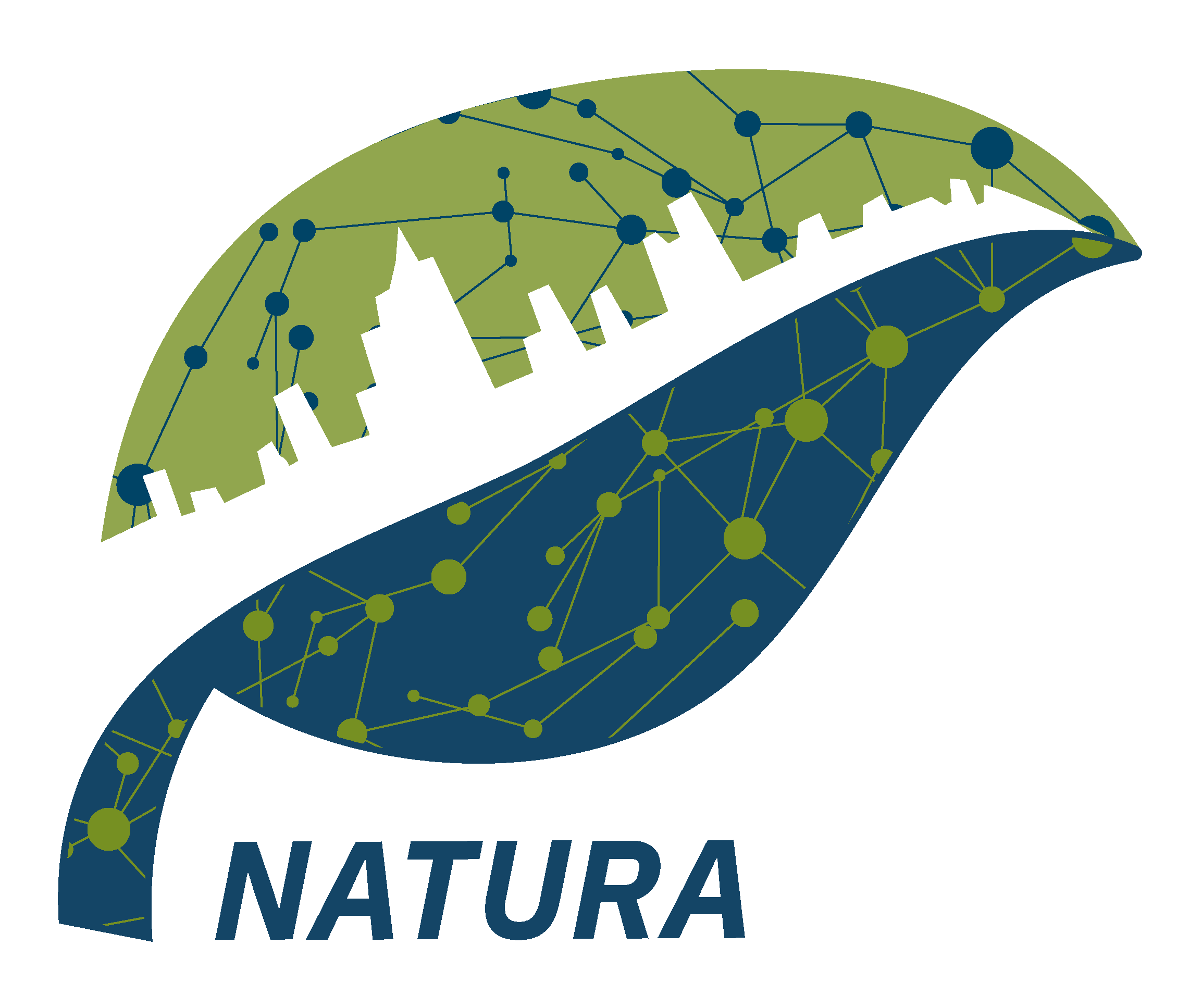
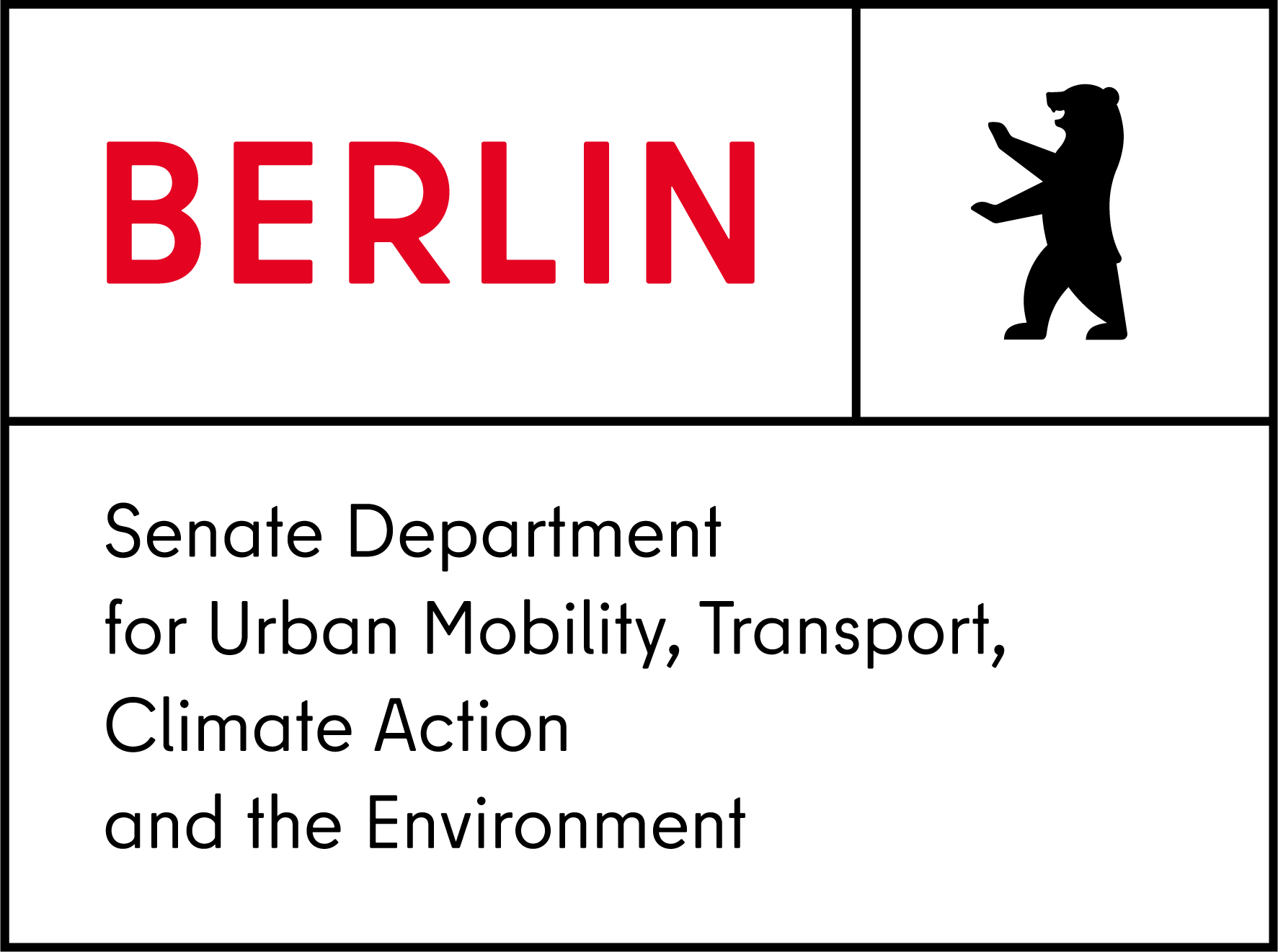
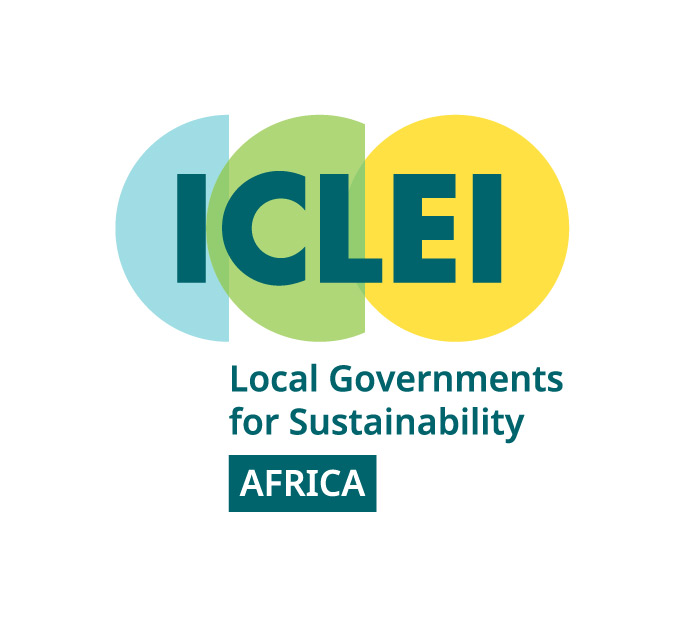
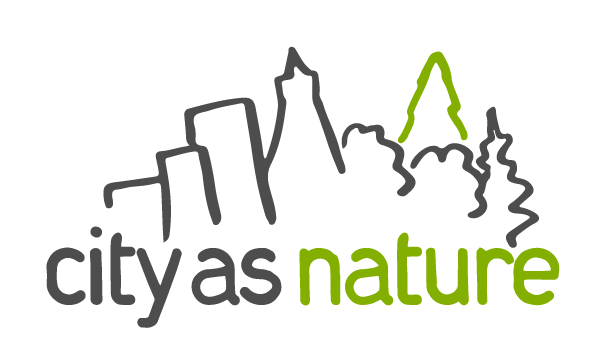




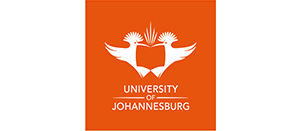




Leave a Reply